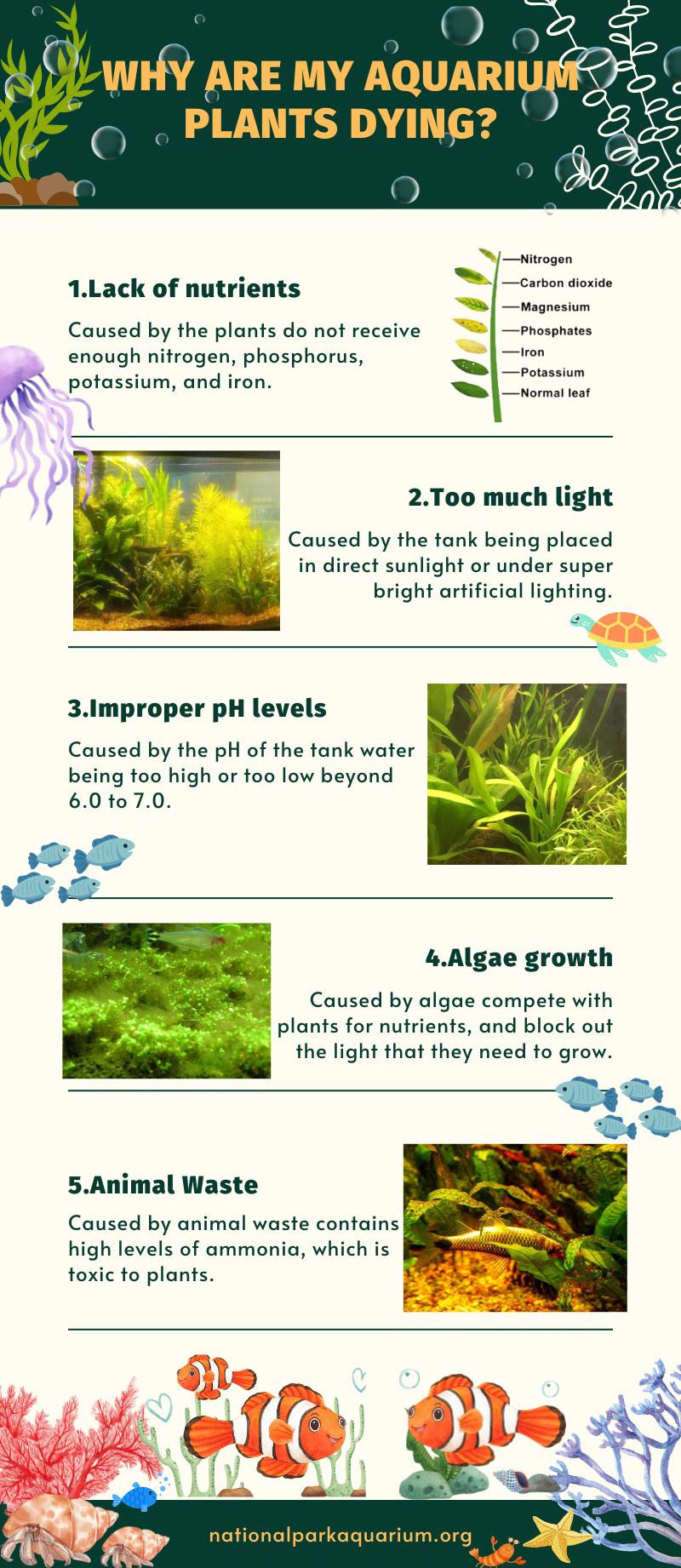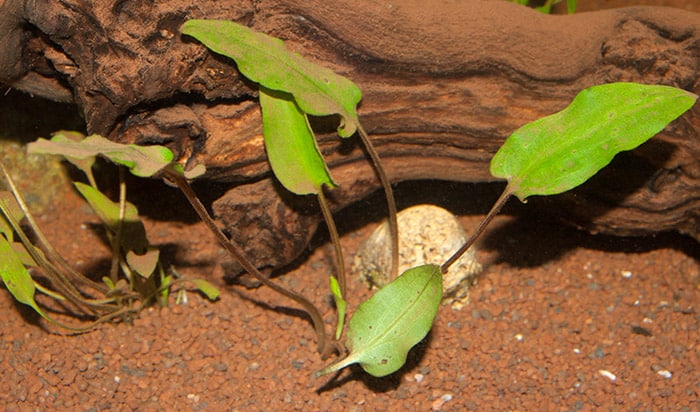Aquarium plants can add beauty and interest to any tank, but sometimes they die seemingly for no apparent reason. When your aquarium plants start dying, it can be a frustrating experience. Not only do you have to deal with the loss of greenery in your tank, but you may also have to deal with the loss of oxygen that healthy plants provide.
So, what’s causing your plants to wilt, and how can you prevent that from happening? Here are some common reasons why aquarium plants die and some tips on keeping them healthy.
Can Dying Aquarium Plants Kill Fish?
Yes, dying plants can harm your fish. Decaying plants produce waste, increasing ammonia and nitrate in the water. High levels of these substances can affect fish gills and lead to death.
Why are My Aquarium Plants Turning Brown and Dying?
Your aquarium plants might turn brown and die due to several reasons. These include lack of nutrients, too much light, improper pH levels, algae growth, diseases, animal waste, and substrate issues.

1. Lack of nutrients
One of the most common reasons aquarium plants die is a lack of nutrients. Like any other plant, aquarium plants need specific nutrients to grow and thrive.
These include:
- nitrogen
- phosphorus
- potassium
- iron
If your plants are not getting enough of these essential nutrients, they will slowly start to decline and eventually die.
Using a good-quality fertilizer, you can provide your plants with the nutrients they need. Many different types of fertilizers are available for aquariums, so be sure to select one specifically designed for use in aquatic environments.
Fertilizing your tank regularly will help to ensure that your plants have the nutrients they need to stay healthy and grow.
2. Too much light
Aquatic plants need a certain amount of light to grow. However, too much light can be as harmful as too little light.
If your tank is placed in direct sunlight or under super bright artificial lighting, your plants may start to suffer from a light burn. This will cause the leaves to turn yellow or brown and eventually die.
To prevent a light burn, bring your tank out of place with direct sunlight at noon and afternoon.
If you are using artificial lighting, experiment with different types and intensities of bulbs until you find a combination that works well for your plants.
You may also want to consider installing a timer to control the light your plants are exposed to daily.
3. Improper pH levels
Another factor that can affect the health of your aquarium plants is the pH level of the water. Most plants prefer slightly acidic water, with a pH between 6.0 and 7.0.
If the pH level of your tank water is too high or too low, it can cause your plants to suffer and eventually die.
You can test the pH level of your tank water with an Aquarium Test Kit (pH Test Strips would also work).
If the pH level exceeds the desired range, you can use a pH adjuster to raise or lower it as needed.
Be sure to follow the instructions on the product packaging carefully to avoid harming your plants.
4. Algae growth
Algae is a common problem in aquariums, and it can harm your plants. Algae compete with your plants for nutrients, causing them to become stunted and eventually die.
In addition, algae can block out the light that your plants need to grow, causing them to suffocate and die.
To control algae growth in your aquarium, start by ensuring you are not overfeeding your fish. Excess food will only serve to fuel the growth of algae.
You should also perform regular water changes and vacuum the gravel to remove excess debris that could be feeding the algae.
Finally, consider using an algae control product specifically designed for use in aquatic environments.
5. Disease
Plants can also suffer from diseases, just like any other living thing.
If your plants seem to be dying for no apparent reason, they may be suffering from a disease. Common plant diseases include root rot, leaf spot, and powdery mildew.
If you suspect that your plants have a disease, the best course of action is to remove them from the tank and consult with a professional. A local aquarium or pet store should be able to help you diagnose the problem and recommend a treatment plan.

6. Animal Waste
If you have fish or other aquatic animals in your aquarium, their waste can also cause problems for your plants.
Animal waste contains high levels of ammonia, which is toxic to plants. In addition, the waste can contribute to algae growth, which can also be harmful to your plants.
- To help prevent problems caused by animal waste, ensure that you perform regular water changes and regularly vacuum the gravel.
- You should also consider using an aquarium filter to remove some waste from the water before it has a chance to build up.
7. Substrate Issues
The substrate (gravel, sand, etc.) you use in your aquarium can also affect the health of your plants. If the substrate is too dense, it can compact over time and prevent the roots of your plants from getting the oxygen they need to grow.
In addition, some substrates may contain chemicals that can be harmful to your plants.
- To avoid problems with the substrate in your aquarium, make sure that you choose a substrate formulated for use with aquatic plants.
- You should also avoid using too much of it in your tank; a layer more than 2 inches deep is usually sufficient.
- Finally, be sure to vacuum the gravel regularly to prevent compaction and remove any debris that could be harming your plants.
How to Stop Aquarium Plants from Dying?
To keep your plants alive, keep these steps in mind:
- Give them the right light and nutrients.
- Regularly test the water’s pH and adjust as needed.
- Control algae by not overfeeding your fish and cleaning the tank regularly.
- Watch out for disease signs and act quickly if you notice any symptoms.
How to Trim Dying Aquarium Plants?
Trimming dying plants can stop the decay from spreading.
Firstly, identify the dying areas, usually turning yellow or brown. Secondly, use sharp scissors to trim these parts off, but avoid cutting the green, healthy sections.
Should I Remove Dying Plants from Aquarium?
Generally, remove dying plants from your aquarium brings many benefits. This prevents potential disease spread and keeps water quality high. But if only a part of the plant is dying, trim off the affected parts before deciding to remove the whole plant.
Conclusion
Aquarium plants dying may be caused by several factors, including poor water quality, incorrect lighting, and lack of nutrients.
By understanding the root causes of these problems, you can take steps to correct them and keep your plants healthy and thriving. Have you had any trouble keeping your aquarium plants alive? What do you think is causing their deaths? Let us know in the comments below.




